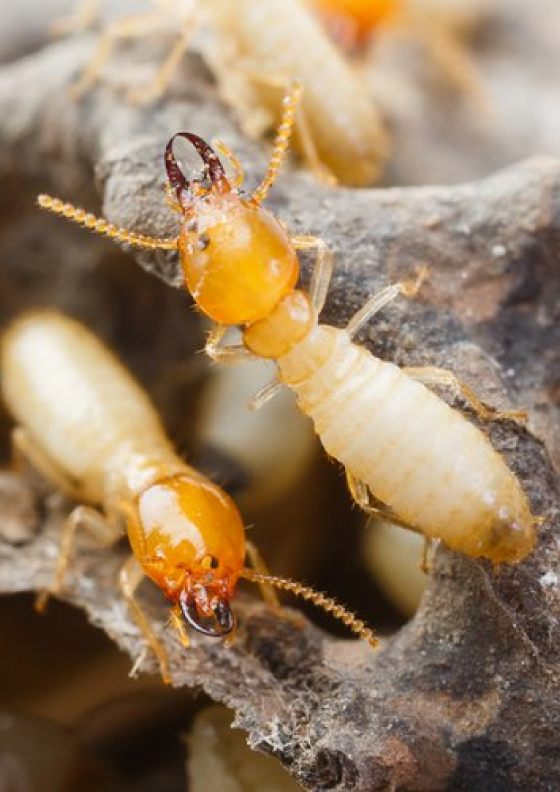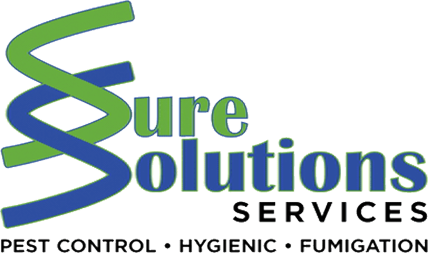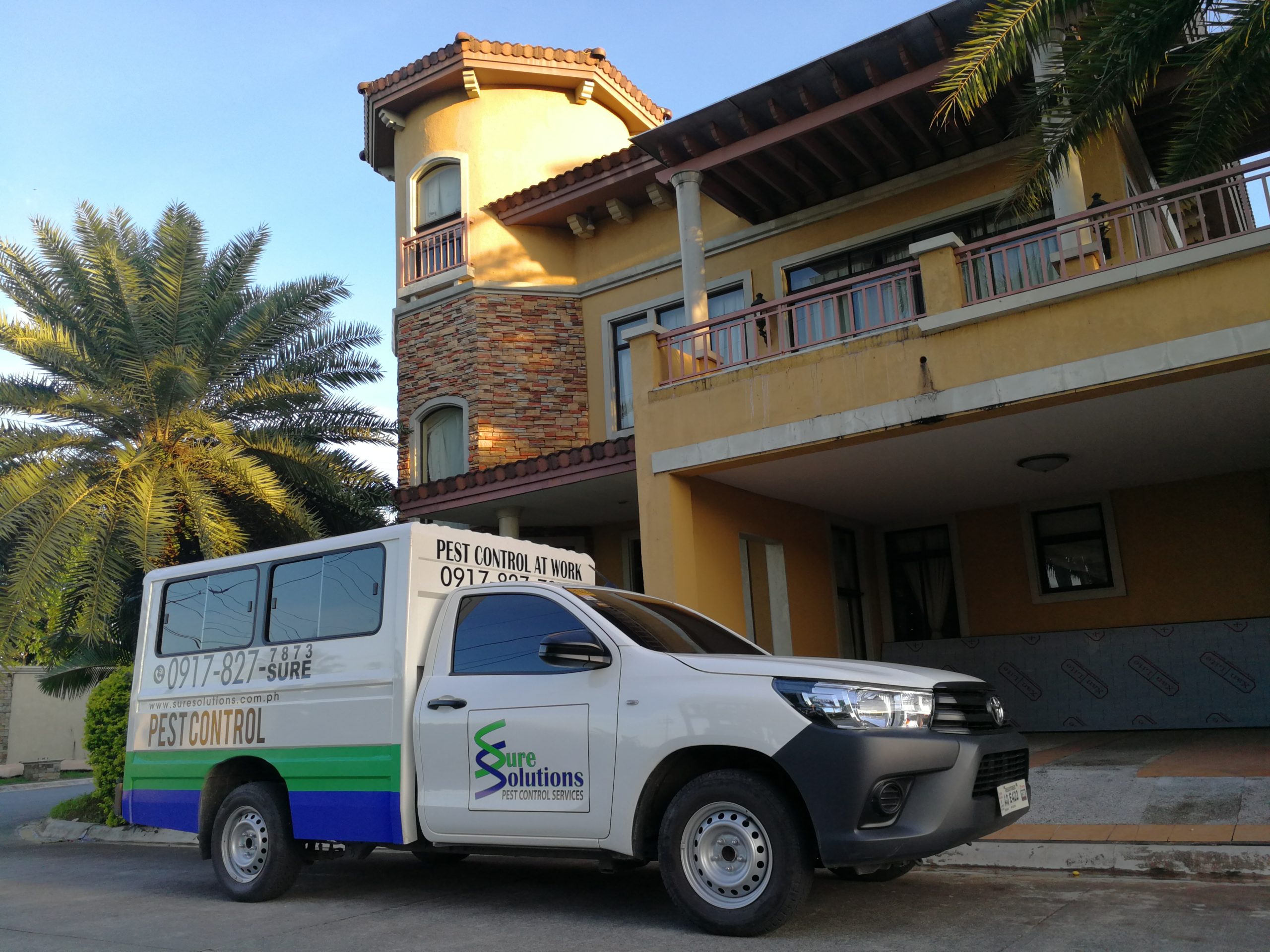Termites
Have you ever felt excited for a new house, furniture, or an appliance, only to see it damaged a few months later? It must be really frustrating to see your hard-earned property destroyed by little pests called termites.
Termites — A house invader. Always lurking, snaking its way through the vents, and coming out when we least expect it. These creatures are known to be one of the most worrisome insects out there because of their desire for wood.
What is a Termite?
In a natural environment, termites (also known as “Anay”) are actually useful to the ecology because they help to break down nutrients from dead trees and plants. However, termites become a formidable threat when they invade our living space.
Termites normally thrive in the soil, that's why a very popular place for termites to flourish is in tropical regions, such as those found in the Philippines.
Termites have two pairs of membranous wings of approximately the same size that, when shed, break along the seams. They are wood-eating pests that infest and feed inside of wooden building structures.
Since termites eat wood, they can severely damage homes and other structures.
Termites may be small, but they cause an average of PHP 205,000 home damages a year!
Termites also feed on agricultural crops and cause damage to commercial establishments as well. Termites are troublesome because they thrive in dark places where humans cannot see them, such as damp soil and crevices in wood. Instead of profiting from your business, termites might even cost you more for damage repair!

Caste System
- Queen/King - They are responsible for egg reproduction, ensuring that the colony population lives on.
- Worker Termites - They may be male or female, usually sterile and responsible for foraging, food storage, brood, and nest maintenance.
- Soldier Termites - They are responsible for defending the colony. They cannot feed themselves due to their large heads.
- Alates - They are the winged termites that are tasked to fertilize the queen, and then die after the mating process.
Signs of Termite Infestation
- Structural Damage - Since termites are notorious for consuming the wood structures from your beloved properties, you have to be wary of newly unstable furnitures or foundations.
They probably feasted on the wood already!
- Termite Wings Everywhere - You can also check for termite infestation if you can see discarded termite wings scattered randomly. Once fertilization is completed, termites tend to lose their wings so watch out if you ever see one.
-
Wood with hollow sounds - Try knocking on any wood that’s supposed to
be solid. If it sounds hollow or empty inside, the termites might have probably eaten the insides away.
- Damaged Home Designs - Have you checked any wood debris on your polished floors?
how about your cute, white window? Do you notice any bubbles on your wallpaper attached on a wooden wall? Termites can really turn a nicely decorated house into a not-so-pleasing environment!
- Soil Tunnels on walls - If you could see any small soil tunnel crawling on walls,
those are called mud tubes. It connects colonies from soil to higher grounds.
Termites might have probably been exploring the crevices of your home without your knowledge!
- Head Banging - This is not the kind of head banging you see in a rock concert.
Soldier termites create a rattling sound by hitting their heads against the walls
of the mud tubes when disturbed or threatened to warn other colonies of danger.
- Foul Odor - Just like any living, moving beings, termites also excrete body waste. They look like piles of coffee ground and smell like mold. If you spot anything that might resemble a termite dropping in your home, chances are you already have one!
Termite Infestation Prevention tips:
- Avoid wood contact from ground
When wooden structures, foundations, or furnitures touch the soil or ground, it gives termites easy access to food, moisture, or shelter.
- Remove food sources
Things like paper products, rotting wood, newspapers, and the likes are food sources for termites. Make your home less attractive for them by removing these objects (or store them properly) as much as possible.
- Be cautious of your indoor plants
Plants can provide pathways for termites. Trim your shrubbery to dry damp or wet plants easier and for you to avoid moisture.
- Avoid moisture near foundations
Moisture is created when water is frequently poured to the soil... and termites love moisture! Divert water away from foundations.
- Reduce moisture and humidity
Vents should be free from dirt and debris. Open doors between rooms to create air circulation.
- Reduce moisture and humidity Vents should be free from dirt and debris. Open doors between rooms to create air circulation.
- Get regular termite inspections
Having a professional check your property regularly could help you get an accurate diagnosis of your property condition and prevent termite infestation, thus, saving you money than having to repair damaged properties.
Source: https://extension.umd.edu/resource/termites
https://en.wikipedia.org/wiki/Termite
https://entomology.ca.uky.edu/ef605
https://www.thisoldhouse.com/pest-control/21238211/how-to-get-rid-of-termites

Why is Termite Control Necessary?
As troublesome as it is, we really hate having pests, especially termites, in our property. We may sometimes want to eradicate them on our own and be done with it. However, we know how stubborn termites can be. Doing it without the help of professionals may leave some termites behind, perpetuating the unending cycle of infestation.
We, at SureSolutions Inc., only want the best results for your properties, and as pest control professionals, we are here to make sure that your termites are completely eradicated.









